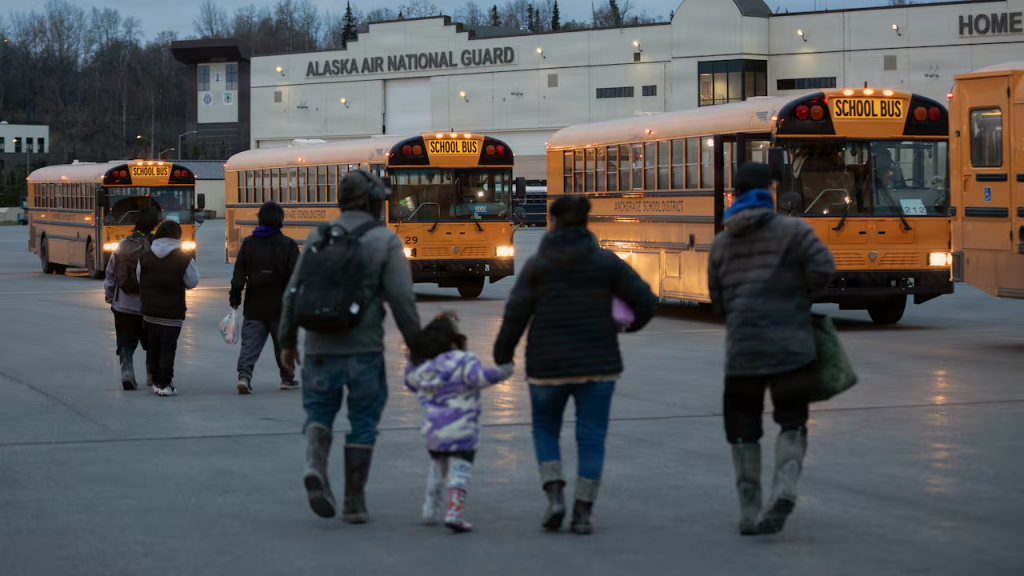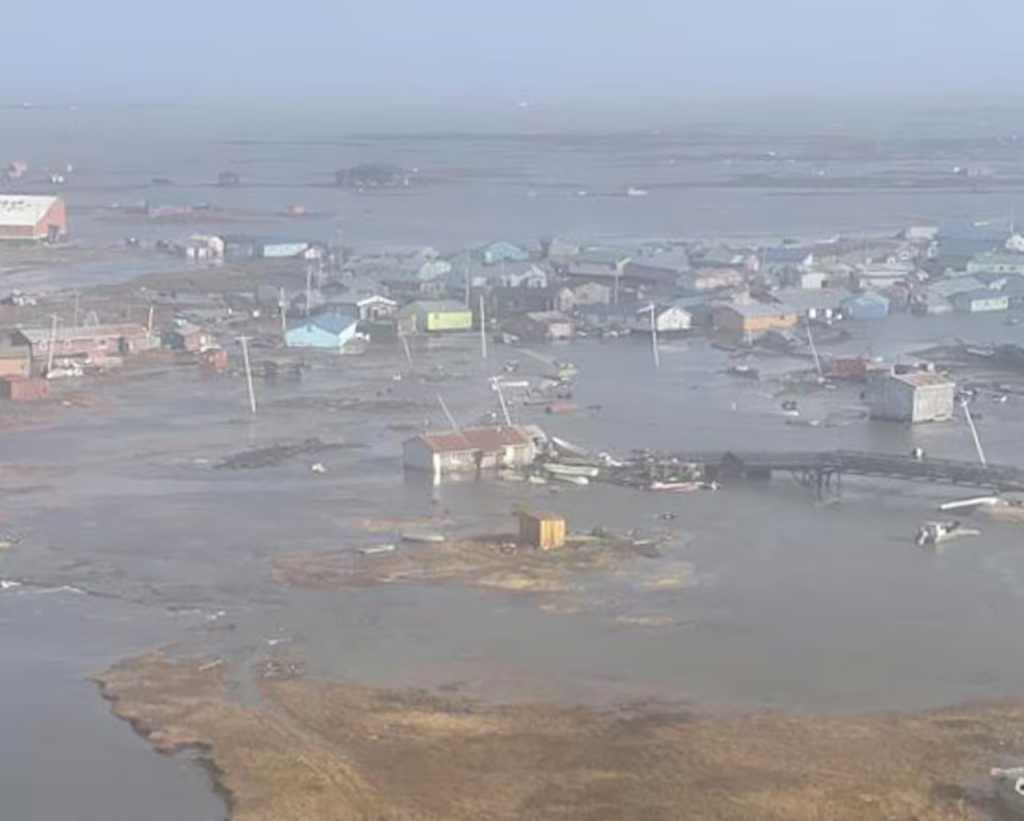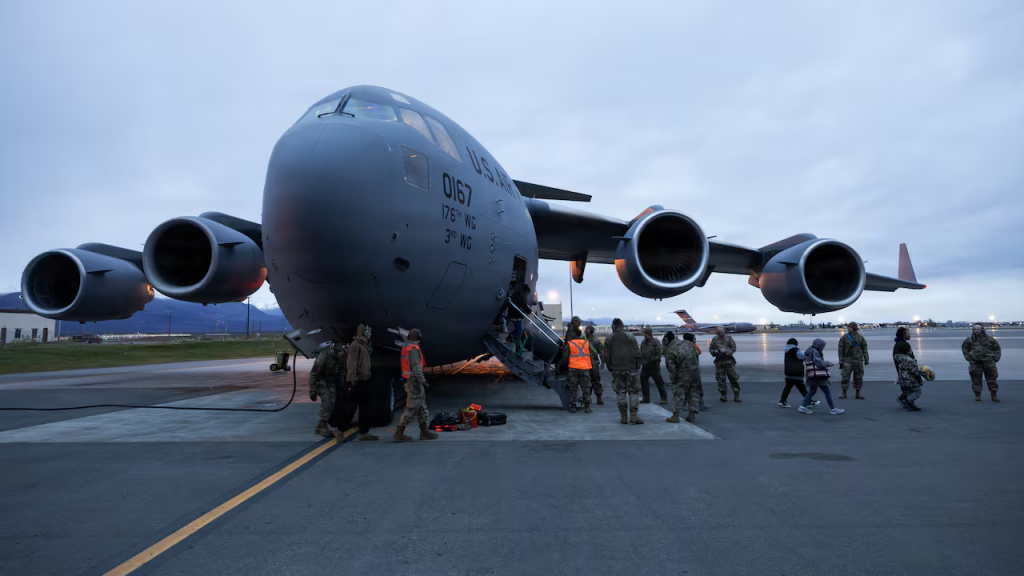What we know about the devastating Alaska storm and the evacuation effort

1 person killed, 2 others missing, and hundreds being flown 800 kilometres to Anchorage after typhoon
Hundreds of residents from remote Alaska Native villages are being airlifted after a storm battered their low-lying communities over the weekend, wiping away homes and killing at least one person.
Two others are missing.
In one of the most significant airlifts in Alaska history, hundreds were being flown about 800 kilometres to Anchorage, after a shelter in the regional hub city of Bethel was filled with dozens of evacuees.
Here are some things to know about the storm and the ongoing evacuation effort.
What happened?
The remnants of Typhoon Halong brought record rainfall to western Alaska on Sunday, devastating the tiny coastal villages of Kipnuk and Kwigillingok, which saw water levels more than 1.8 metres above the highest normal tide line.

In Kwigillingok, the U.S. Coast Guard rescued two dozen people from their homes after the structures floated out to sea in high water. Ella Mae Kashatok, 67, was found dead in Kwigillingok, and authorities on Monday night called off the search for two men — Chester Kashatok, 41, and Vernon Pavil, 71 — after their home was swept away.
Officials on Thursday said 121 homes were destroyed in Kipnuk, but all people have been accounted for.
Who lives there?
The villages of Kipnuk and Kwigillingok are near the Bering Sea and have a total population of around 1,000 people, almost all of whom identify as Alaska Native or American Indian, according to Census Bureau data.
They are off the state’s main road system and reachable this time of year only by water or by air.
A video from Kipnuk shows a house floating away as people on land speak Central Alaskan Yup’ik, the largest of the Alaska Native languages. There are about 10,000 speakers of the language in 68 villages across southwest Alaska.
How is the evacuation effort going?
Officials said there are about 1,600 people across 13 shelters that have been established in the Yukon-Kuskokwim Delta in southwest Alaska. Officials are hoping the evacuees will be able to be moved into hotel rooms or dormitories.
About 300 evacuees were flown to Anchorage on Wednesday, about 800 kilometres east of the battered villages, according to the state Department of Military and Veterans Affairs.

They were going to the Alaska Airlines Center, a sports and events complex with space for about 400, officials said.
The shelter in Bethel, which was set up at a National Guard armory, was already facing difficulties, with food supply “near depletion,” FEMA officials said in a briefing report Thursday. The Yukon Kuskokwim Health Corp. warned on Wednesday the shelter at the armory would have to close.
How difficult will it be to rebuild?
Damage assessments are still ongoing, but experts say the hardest-hit communities face a dire situation.
Most construction materials will need to be flown or shipped in, and with winter fast approaching, time is running short.
Emergency officials said some homes are beyond repair and unsafe to return to, even with emergency fixes.
Related stories from around the North:
Canada: Indigenous villages in Alaska face ‘absolute devastation’ after Typhoon Halong, CBC News
United States: North Alaska storms drive 1,500 from homes, 2 villages are decimated, The Associated Press




My heart goes out to the families and communities affected by this devastating storm, especially those who have lost loved ones or their homes.